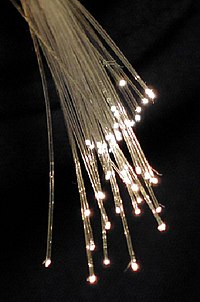
Photo from wikipedia
The aim of the investigation presented here was to understand how the viscosity parameters of an adhesive layer affect group velocity and attenuation of the double-layer adhered pipe. Various parameter… Click to show full abstract
The aim of the investigation presented here was to understand how the viscosity parameters of an adhesive layer affect group velocity and attenuation of the double-layer adhered pipe. Various parameter combinations (attenuation of longitudinal wave and shear wave, pαL and qαT; thickness, d; and density, nρ) were utilized in order to generate different uncured degrees of the adhesive layer. In the frequency range 0∼500 kHz, the group velocity dispersion curves and attenuation dispersion curves were obtained from these models. Then, the group velocity and attenuation of the two commonly used modes, and , were compared and analyzed. The results have shown that it is important to remark that little effect on group velocity was caused, and significant linear increases of attenuation occur with increase in q, d, and n. However, variable had little effect on attenuation; more modes emerged when d increased or n decreased, causing difficulties on mode identification and signal processing. The numerical results provided a useful way to evaluate bonding quality by measuring the group velocity and attenuation in the pipelines.
Journal Title: Advances in Materials Science and Engineering
Year Published: 2019
Link to full text (if available)
Share on Social Media: Sign Up to like & get
recommendations!